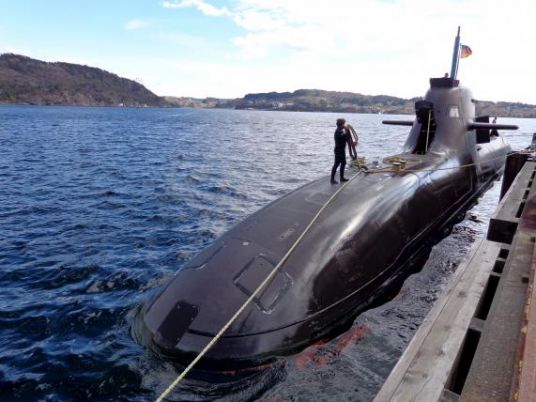
NATO launched one of its biggest-ever anti-submarine exercises in the North Sea on Monday, inviting non-member Sweden for the first time, amid increasing tensions between Russia and its northern neighbours.
More than a dozen vessels from 11 countries are participating in the "Dynamic Mongoose" exercise. NATO will simulate detecting and attacking submarines in one of the most hostile seas, with rugged but shallow underwater canyons, rapid currents and unusually high sound pollution from freshwater pouring in from Norway's fjords.
Tensions have run high since Russia annexed part of Ukraine last year, with the three small Baltic states, who also rely on the Nordics for defence, fearing they may be next as they are home to big Russian minorities.
Finland detected an unidentified submarine along its coast last week, firing depth charges at the vessel, while NATO-member Latvia, a former Soviet state, last month said it detected a Russian submarine near its waters.
Russian aircraft have also repeatedly approached and even violated Nordic and Baltic airspace in recent months, challenging air defences and triggering allied responses.
"Russia has a right to be at sea, just as we do," Rear Admiral Brad Williamson, the commander of the exercise said. "But the incidents we have seen are not in line with international regulations… and that's been the cause of concern."
"This is not a response to that… but provides relevance to the exercise," Williamson said on board the USS Vicksburg, the lead vessel in the exercise.
Nordic defence ministers issued a strongly worded condemnation of Russia last month, calling it the biggest threat to security, prompting Russia to say that Finland's and Sweden's closer ties with NATO were of "special concern".
"The Russians have increased their activity a lot and so have we," said Kai Nickelsdorf, the commander of Germany's U33 submarine, which is playing the role of an enemy in the exercise.
The four submarines involved, including a Swedish one, will be tasked to approach and target the ships undetected, simulating an attack on surface ships.
Although Norway shares a long maritime border with Russia in the Arctic, it played down the recent increase in activity.
"We saw a drop in activity level a few years ago and it's now back to where it was, the normal level," Ole Morten Sandqvist, the commander of the Norwegian fleet said. "The number of ships, aircraft in the air and so forth.. has become more frequent than it used to be."




